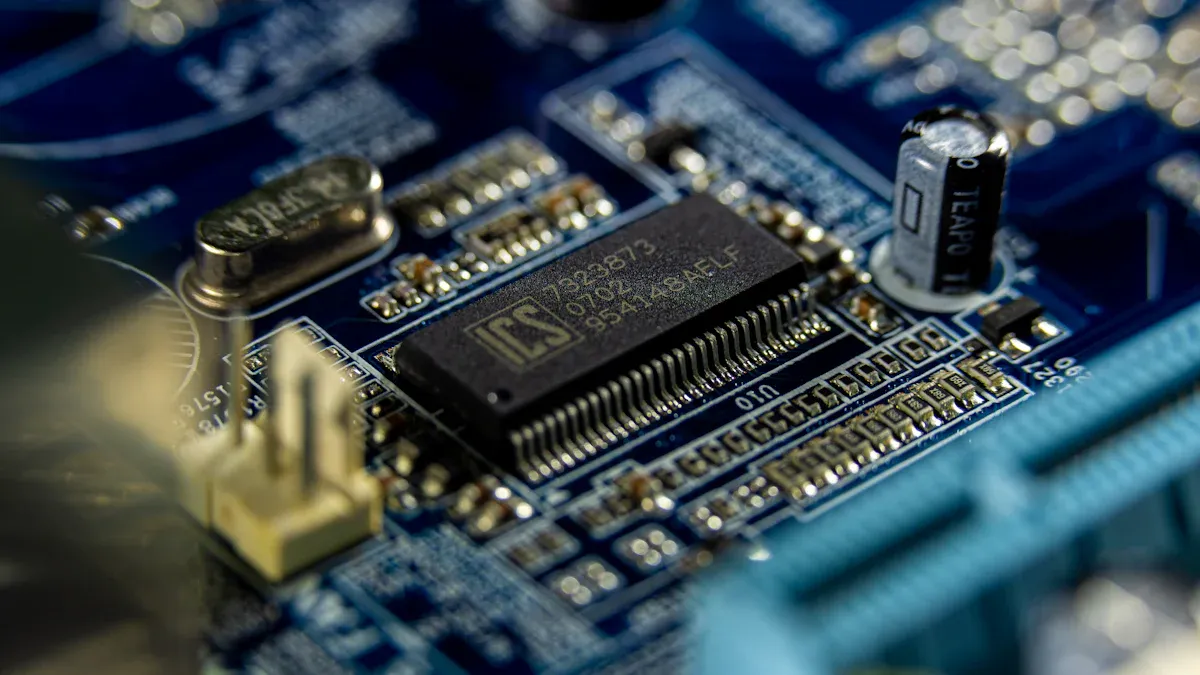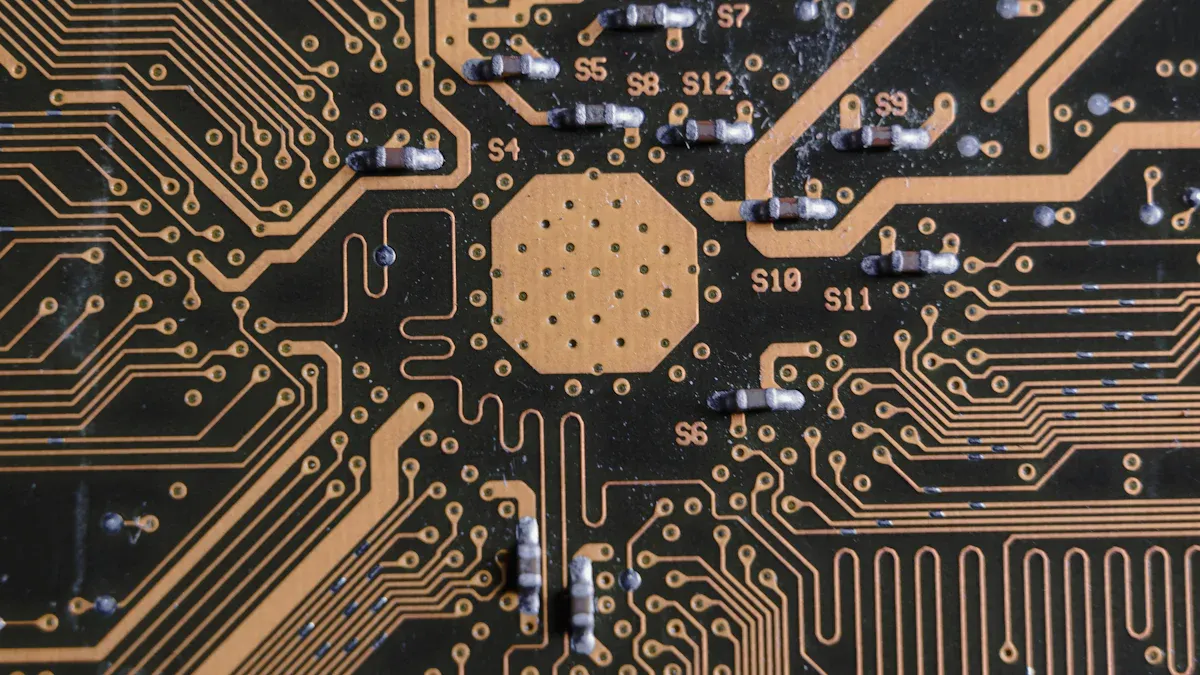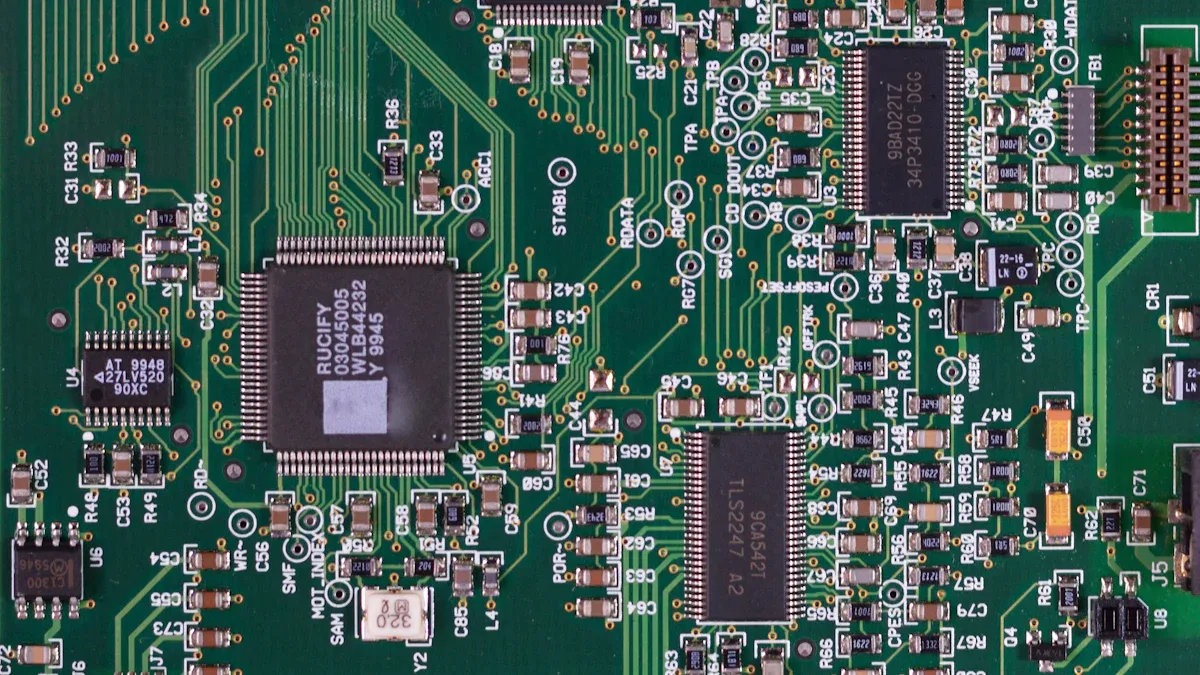What Is an IC Demodulator and Its Role?

An IC demodulator helps pull useful information from modulated signals. It is important for getting back original data or sound. This ensures the signal you get is clear and correct. This technology is key to modern communication systems. It helps devices like radios, TVs, and phones work smoothly.
The need for IC demodulators has grown with new tech in electronics. For example:
The FM IF Demodulator ICs market may grow from $2.1 billion in 2023 to $3.5 billion by 2032.
More IoT uses and better signal tools are boosting this growth.
By improving signal quality and helping data move efficiently, the IC demodulator is a must-have in today’s connected world.
Key Takeaways
IC demodulators take clear information from signals used in radios and TVs.
They make signals better by removing noise, improving sound and video quality.
There are different types like AM, FM, and digital for various uses.
IC demodulators help send data quickly in IoT and 5G networks, keeping devices working well.
Learning about IC demodulators helps you understand how communication devices work.
How Does an IC Demodulator Work?

The process of modulation and demodulation
Modulation and demodulation are key steps in communication. Modulation changes a carrier signal to carry information. Demodulation retrieves the original data from the modulated signal. You use these processes with devices like radios or TVs.
Here’s how they work:
Digital Signal Processing (DSP) helps fix frequency and phase issues. It recovers bit streams at the receiver.
High-speed Analog-to-Digital Converters (ADCs) turn intermediate frequency (IF) signals into digital form. This is useful for very fast data rates, like 100 Gb/s.
Real-time demodulation techniques handle simple signals like On-Off Keying (OOK) and Amplitude Shift Keying (ASK). These use noncoherent detection methods.
Coherent and noncoherent strategies decode signals like Binary Phase Shift Keying (BPSK) and Quadrature Phase Shift Keying (QPSK). Differential coding is often used.
Dynamic divider MMICs are sensitive tools that recover carriers, even from weak signals.
These methods make sure the demodulated signal is clear and reliable for communication.
Key components of an IC demodulator
An IC demodulator has important parts that work together. These parts process RF signals and pull out useful data. Each part has a special job to ensure clear signals.
Component Type | What It Does | Performance Details |
|---|---|---|
Measures signal strength and phase in impedance spectroscopy. | Works well across many frequencies compared to other designs. | |
Polar Demodulator | Uses a reference resistor to measure strength and phase. | Needs complex circuits and uses more power to handle wide frequencies. |
Self-Mixing Full-Wave Rectifier | Often used to measure signal strength. | Avoids delays from amplifiers, making it reliable across different frequencies. |
These parts help IC demodulators handle many types of signals. They are used in both everyday gadgets and advanced systems.
Step-by-step explanation of the demodulation process
Demodulation turns modulated signals into usable data. Think of it as steps to clean and decode the signal.
Step 1: The receiver collects RF signals and removes unwanted noise.
Step 2: An amplifier boosts the signal so it’s strong enough to process.
Step 3: The IC demodulator separates the carrier signal from the data. It uses methods like coherent detection.
Step 4: The baseband signal is processed further to get the original data, like sound or information.
Step 5: The final output goes to the connected device for clear communication.
Diagrams often show these steps and how the parts work together. Data proves these methods work well, especially for detecting speech signals.
Types of IC Demodulators
AM demodulators and their applications
AM demodulators pull data from amplitude-modulated signals. They are used in radios and broadcasting devices. These tools decode signal strength changes to recover sound or information.
Different methods make them work better in various situations. For example:
Lock-in amplifiers are good for low bandwidth but struggle with high frequencies.
Kalman filters are sensitive and track well but need complex setups.
Bandwidth | Complexity | Sensitivity to Frequency | |
|---|---|---|---|
Lock-in Amplifier | Low | Medium | High |
High-bandwidth Lock-in Amplifier | High | High | Medium |
Coherent Demodulator | High | High | Low |
Kalman Filter | Highest | Medium | Low |
Lyapunov Filter | High | Low | Low |
Moving Average Filter | Low | Low | High |
Mean Absolute Deviation | Low | Low | High |
Peak Detection | Low | Medium | Medium |
These methods help AM demodulators work well in different places. They ensure signals are clear for communication systems.
FM demodulators and their role in audio systems
FM demodulators decode frequency-modulated signals. They are used in radios and music players. These tools focus on signal frequency changes, not strength. This makes them great for clear sound and less noise.
One type is the direct-conversion quadrature demodulator. It turns FM signals into baseband frequencies directly. This method is simple and improves sound clarity. FM demodulators are key for delivering good audio in entertainment and communication.
Digital demodulators for modern communication systems
Digital demodulators process signals in advanced systems. They are found in IoT devices, smartphones, and satellites. These tools decode digital signals like BPSK and QPSK.
Unlike analog ones, digital demodulators use algorithms to process data. They recover accurate information even with noise. For example, coherent detection matches the carrier frequency for better clarity. Digital demodulators make communication faster and more reliable for modern technology.
Applications of IC Demodulators

Use in Telecommunications and Broadcasting
IC demodulators are key for phones and live TV. They pull data from signals to give clear sound or video. When you call someone, the demodulator processes the signal for accuracy.
Telecom systems use MSK demodulators made with CMOS-IC technology. These have circuits for phase detection and carrier recovery. They work well in tough conditions like fading signals. They also keep errors low and performance steady.
Aspect | Details |
|---|---|
Demodulator Type | MSK coherent demodulator |
Technology Used | CMOS-IC technology |
Components | Circuits for phase detection, carrier recovery, and timing-clock recovery |
Performance Metrics | Low error rates and stable results in fading environments |
Design Techniques | Digital IC design with frequency-locking for quadrature demodulation |
Carrier Recovery Circuit | Modified BPSK Costas-loop used for better IC implementation |
Broadcast systems use IC demodulators for radio and TV signals. These tools make sure sound and pictures stay clear, even in bad conditions.
Role in Consumer Electronics Like Radios and TVs
Radios and TVs use IC demodulators every day. Radios decode FM signals to give clear sound. TVs handle AM and FM signals for good picture and audio.
Smart TVs use digital demodulators for HD signals. This makes watching shows smooth and enjoyable. These devices improve sound and picture quality by reducing noise.
Importance in IoT and Wireless Communication Systems
IC demodulators are vital for IoT and wireless systems. They help devices talk to each other and share data. For example, your smart thermostat uses a demodulator to send info to your phone.
Digital demodulators process signals even with noise. This helps IoT devices work well in homes and cities.
Wireless systems like 5G and satellites also need IC demodulators. They make data transfer fast and safe. These tools keep you connected in today’s digital world.
Benefits and Importance of IC Demodulators
Making signals clearer and better
IC demodulators help make signals clearer and easier to understand. They remove noise and unwanted interference, keeping the original data safe. For example, if a receiver processes a weak signal of 1 µV across a 1 MΩ resistor, the thermal noise at room temperature is about 127 nV/√Hz. To get a signal-to-noise ratio (SNR) above 10, the filter bandwidth must be 620 mHz or smaller. This shows how IC demodulators control noise, giving a cleaner and clearer signal.
By improving signal quality, these devices make radios and TVs work better. Whether you're enjoying music or watching live TV, the demodulator keeps the sound and picture clear and free from distortion.
Helping data move quickly and reliably
IC demodulators make data transfer fast and accurate by pulling information from modulated signals. They reduce errors, even in tough conditions. For example, in areas with weak signals, the demodulator separates the carrier signal from noise, keeping the data reliable.
This is very important for things like phone calls, where clear sound is needed. It also helps with fast internet and streaming, so you have fewer interruptions.
Boosting modern communication technology
IC demodulators are key to today’s advanced communication systems. They help with 5G networks, IoT devices, and satellites by processing complex signals quickly and correctly.
For example, in IoT, devices like smart thermostats and cameras use demodulators to send data to your phone. This allows real-time control and updates. In 5G networks, demodulators handle high-frequency signals, making connections faster and more reliable.
By supporting these technologies, IC demodulators help improve communication and keep you connected in a digital world.
An IC demodulator helps get information from modulated signals. It makes communication clear by recovering original sounds or data. It works by processing signals and separating carrier waves. Different types, like AM, FM, and digital demodulators, are used in radios, TVs, and IoT devices. These tools improve signal quality and send data quickly and accurately. They are important for modern tech like 5G and IoT. IC demodulators are a key part of today’s connected world.
FAQ
What does an IC demodulator do?
An IC demodulator gets original data or sound from signals. It removes noise to make communication clear. Devices like radios, TVs, and phones need it.
How does an IC demodulator make signals better?
It cleans up noise and interference to recover the signal. This makes sound and video clearer and more reliable for your gadgets.
Where are IC demodulators used?
They are used in phones, TVs, and broadcasting systems. They are also important for IoT devices, 5G, and satellites.
What kinds of signals can IC demodulators handle?
IC demodulators work with AM, FM, and digital signals. AM is for broadcasting, FM is for sound, and digital is for modern tech.
Why are IC demodulators useful for IoT?
They help IoT devices share data by processing signals well. Even in noisy places, they keep devices like smart cameras and thermostats connected.
See Also
A Comprehensive Guide To Understanding Communication Chips
Fundamentals Of Analog IC Design And Its Uses
Exploring Industrial Control Chips And Their Automation Role
The Importance Of ON Semiconductor Power Management Solutions
